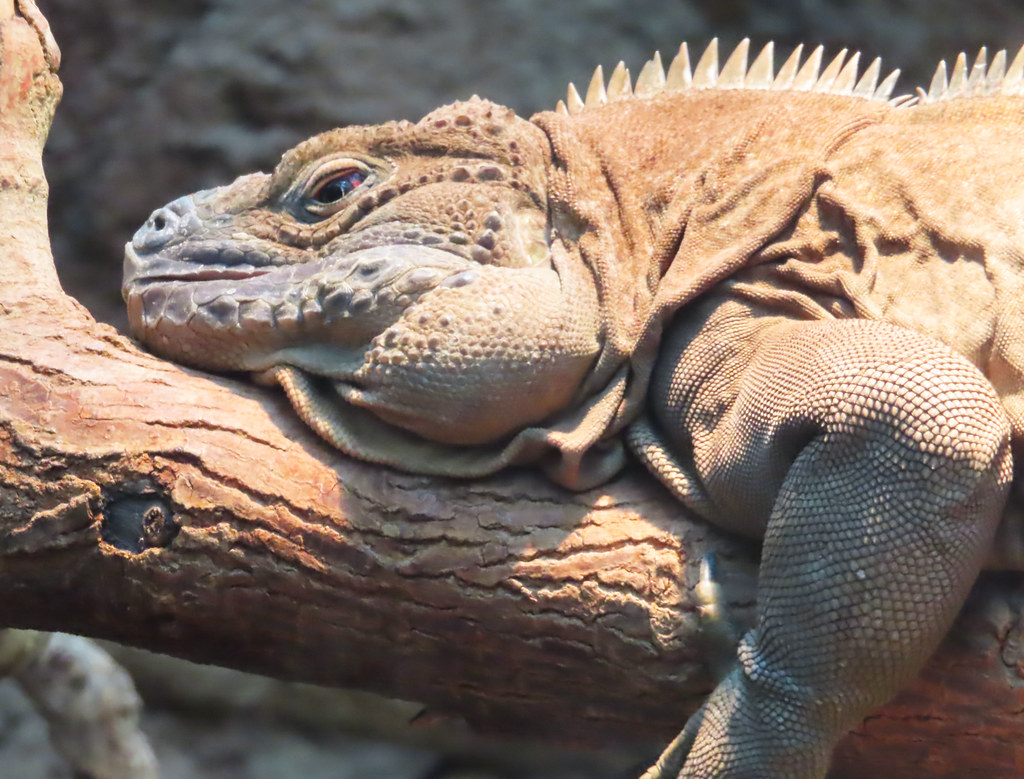Across parks, waterways, forests, and suburban neighborhoods throughout the world, a concerning ecological drama is unfolding. Burmese pythons slither through the Everglades, red-eared slider turtles displace native species in European ponds, and lionfish devastate coral reef ecosystems. These animals share a common story – they began as exotic pets before being released into environments where they never naturally occurred. The deliberate or accidental release of non-native exotic pets into the wild represents one of the most challenging and persistent conservation issues of our time. This growing problem threatens biodiversity, disrupts ecological balance, strains economic resources, and can even endanger human health. Understanding why pet owners release exotic animals and the far-reaching consequences of these actions is crucial for developing effective solutions to this multifaceted crisis.
The Scale of the Exotic Pet Trade

The global exotic pet trade has exploded into a multi-billion dollar industry that traffics millions of animals annually across international borders. Beyond traditional pets like cats and dogs, consumers now regularly purchase species ranging from prairie dogs and sugar gliders to monitor lizards and tarantulas. In the United States alone, it’s estimated that millions of households possess at least one exotic animal, creating a massive potential pool for future releases. The internet has dramatically expanded access to these animals, with online marketplaces and social media platforms connecting buyers and sellers worldwide with minimal oversight. This booming trade creates a pipeline for countless animals that may eventually be abandoned when owners can no longer care for them properly.
Unrealistic Expectations: When Reality Disappoints

Many exotic pet releases begin with impulse purchases fueled by unrealistic expectations about the animal’s needs, behaviors, and lifespan. Prospective owners often fail to research the species thoroughly before acquisition, focusing instead on novelty or status. The tiny, adorable iguana purchased at a pet store may grow to six feet long, requiring specialized heating, lighting, and a room-sized enclosure. Similarly, the charming baby monkey ultimately develops complex social needs and aggressive behaviors that the average household cannot accommodate. These realities create a disconnect between the romanticized idea of exotic pet ownership and its challenging day-to-day responsibilities. When faced with this gap between expectation and reality, some owners choose release as what they perceive to be a humane solution, failing to consider the broader ecological consequences.
Financial Burden: The Cost of Proper Exotic Pet Care

The long-term financial commitment required for exotic pet care often comes as a shock to unprepared owners. Specialized diets, custom habitats, temperature control systems, and exotic animal veterinary care can quickly escalate into thousands of dollars annually. Many exotic species require fresh produce, live insects, or specialized nutritional supplements that cost significantly more than conventional pet food. When these animals develop health problems, owners may face veterinary bills from specialists who charge premium rates for their expertise with uncommon species. The economic burden becomes particularly problematic during personal financial hardships like job loss or medical emergencies, when an expensive exotic pet may no longer seem sustainable. These financial pressures create situations where owners feel they have no option but to abandon their pets, sometimes choosing release over euthanasia or finding a sanctuary that may charge surrender fees.
Legal Pressures and Changing Regulations

Shifting legal landscapes regarding exotic pet ownership can trigger waves of animal releases. When municipalities or states implement new bans on certain species, owners who acquired their pets legally may suddenly find themselves in possession of illegal animals. These regulatory changes often occur with limited grandfather provisions or inadequate surrender options, leaving owners in precarious legal positions. Fear of prosecution or fines can drive some owners to release animals rather than declare them to authorities. The Florida Everglades python problem partially stems from such a scenario, where a 1992 hurricane damaged breeding facilities and new regulations prompted releases of established pets. This pattern continues today, with releases often spiking whenever new exotic pet restrictions are announced, creating predictable pulses of non-native introductions that overwhelm local ecosystems.
Life Changes and Housing Restrictions

Major life transitions frequently precipitate exotic pet releases when owners cannot accommodate their animals through personal changes. Relocations for employment, moving to senior living facilities, or transitioning to apartment living can make continuing to care for space-intensive exotic species impossible. Many rental properties and homeowners associations explicitly prohibit exotic pets, creating housing insecurity for owners committed to their animals. Even temporary housing situations, such as moving back with family members during financial hardships, may not accommodate exotic pets that require specialized setups. For college students who impulsively acquired exotic pets during their studies, graduation and subsequent life transitions create particularly high-risk periods for animal abandonment. These situations force difficult decisions, and without proper surrender options, release into seemingly suitable environments becomes an expedient solution.
The “False Kindness” Misconception

A dangerous misconception driving many releases is the belief that releasing an exotic pet constitutes an act of compassion. Owners convince themselves they’re “setting the animal free” to live a natural life, projecting human concepts of freedom onto creatures entirely unprepared for survival in foreign ecosystems. This “false kindness” narrative helps alleviate the owner’s guilt while ignoring the animal’s actual welfare and ecological consequences. Most released pets have spent their lives in captivity without developing hunting skills, predator awareness, or appropriate foraging behaviors necessary for survival. Additionally, released animals often face hostile climates, inadequate food sources, and environments lacking the specific ecological niches that would support them in their native ranges. This misguided compassion not only typically condemns the individual animal to suffering but potentially creates extensive collateral damage to native species when the animal does manage to survive.
Social Media Influence and Exotic Pet Trends

The rise of social media has dramatically amplified exotic pet trends, creating boom-and-bust cycles that frequently end in abandonments. Viral videos featuring unusual animals like slow lorises, fennec foxes, or sugar gliders drive impulsive purchases by viewers eager to replicate the adorable interactions they’ve seen online. Celebrity influencers showcasing exotic pets can trigger industry-wide demand spikes, with breeders and importers rushing to meet consumer interest without emphasizing the species’ complex care requirements. When the trend inevitably fades or the reality of care becomes apparent, a wave of unwanted animals follows. These social media-driven acquisition patterns create concentrated surges of specific species entering the pet trade and, subsequently, being released when the fad passes. The sugar glider boom of the 2010s exemplifies this pattern, with countless marsupials ultimately abandoned after their popularity as “pocket pets” waned.
Ecological Devastation from Successful Invaders

When released exotic pets establish breeding populations, they can trigger catastrophic ecological cascades that fundamentally alter ecosystems. The Burmese python invasion of the Florida Everglades represents one of the most notorious examples, with these massive constrictors decimating small mammal populations by as much as 99% in some areas. Similarly, the release of lionfish from home aquariums into Atlantic waters has created one of the most destructive marine invasions in history, with individual fish consuming dozens of native reef species daily. Escaped monk parakeets have established colonies in urban centers across the United States, damaging infrastructure and competing with native birds. These successful invaders often thrive due to lack of natural predators, diseases, or competitors that would normally control their populations in their native ranges. Their success frequently comes at the expense of native species that lack evolutionary adaptations to compete with or defend against these novel threats.
Economic Costs to Communities and Governments

The financial burden of managing invasive former pets extends far beyond ecological concerns, creating significant economic strain on public resources. Government agencies spend hundreds of millions of dollars annually on control efforts for established invasive species, with Florida alone dedicating over $20 million yearly to python management in the Everglades. The agricultural sector suffers extensive damage from invasive former pets like feral swine and certain reptile species that destroy crops and irrigation systems. Tourism can decline in areas where invasive species degrade natural attractions or create safety concerns, as seen in regions where venomous lionfish have established. Even infrastructure faces damage from certain escaped exotics, particularly monk parakeets whose massive communal nests on utility poles cause electrical fires and power outages. These economic impacts translate into higher taxes, increased utility rates, and reduced community services as public funds are diverted to invasive species management.
Human Health and Safety Risks

Released exotic pets can pose significant public health and safety concerns beyond their ecological impact. Large predatory species like big cats, bears, and venomous reptiles present obvious dangers when released near populated areas, with multiple fatalities documented from encounters with escaped or deliberately released dangerous exotics. Less obvious are the disease transmission risks, with former pet species potentially harboring pathogens transmissible to humans or native wildlife. The 2003 monkeypox outbreak in the United States originated from infected African rodents imported for the pet trade, subsequently infecting prairie dogs that were then sold as pets. Mosquito-borne diseases can increase when invasive former pets create new breeding habitats, as seen with abandoned aquarium plants clogging waterways. Even seemingly innocuous species like red-eared slider turtles frequently carry Salmonella bacteria that can contaminate water bodies used for recreation, creating public health hazards in community ponds and lakes.
Barriers to Proper Surrender Options

The infrastructure for responsibly surrendering unwanted exotic pets remains woefully inadequate in most regions, creating a systemic push toward release. Animal shelters typically lack the facilities, expertise, and resources to accept non-traditional pets, focusing their limited capacity on domestic dogs and cats. Specialized exotic animal sanctuaries exist but operate at perpetual capacity with lengthy waiting lists, and many charge substantial surrender fees that owners cannot afford. Zoos rarely accept former pets due to unknown genetic backgrounds, potential disease risks, and limited space for non-collection animals. Even finding another private owner can prove challenging for species that have fallen out of fashion or developed behavioral issues during improper care. This infrastructure gap creates a situation where even owners actively seeking responsible surrender options may find themselves with seemingly no alternatives to release.
Regulatory Challenges and Enforcement Gaps

The regulatory framework governing exotic pet ownership remains inconsistent and riddled with enforcement challenges that facilitate problematic releases. Laws vary dramatically between jurisdictions, creating confusion for owners and opportunities for regulatory avoidance through relocation. Internet sales frequently circumvent whatever local restrictions exist, with online sellers shipping animals across state and national borders with minimal oversight. Even when comprehensive regulations exist, enforcement agencies typically lack sufficient personnel, funding, and expertise to effectively monitor the exotic pet trade. Pet stores and breeders rarely face meaningful consequences for selling inappropriate species to unprepared owners or providing inadequate care information. The resulting regulatory patchwork creates a system where acquiring exotic animals remains relatively easy while ensuring responsible ownership throughout the animal’s lifetime proves nearly impossible to enforce.
Promising Solutions and Prevention Strategies

Despite the challenges, several promising approaches are emerging to address the exotic pet release crisis. Amnesty programs, where owners can surrender illegal or unwanted exotic pets without penalties, have proven successful in collecting animals before release, with Florida’s Python Challenge removing thousands of invasive constrictors. Community education campaigns highlighting the ecological consequences of releases and correcting the “false kindness” narrative help prevent well-intentioned but harmful releases. Pre-purchase certification requirements, where prospective owners must demonstrate knowledge of a species’ needs before acquisition, show promise in reducing impulse purchases and subsequent abandonments. Microchipping exotic pets creates accountability and assists with tracking released animals to their sources. Collaborative partnerships between wildlife agencies, pet industry stakeholders, and animal welfare organizations have produced innovative solutions like the Habitattitude campaign, which provides resources for responsible pet surrender. These multifaceted approaches acknowledge that preventing releases requires addressing the entire lifecycle of exotic pet ownership, from acquisition to eventual disposition.
Conclusion

The problem of exotic pets being released into the wild represents a complex intersection of human behavior, animal welfare, ecological integrity, and regulatory policy. As wild animals continue to enter our homes through the pet trade and subsequently re-enter ecosystems they never evolved to inhabit, the consequences ripple through biodiversity, economies, and human communities. Addressing this growing crisis demands a coordinated response that combines stronger regulations, improved enforcement, expanded surrender options, and comprehensive public education. While the challenges are substantial, successful initiatives demonstrate that progress is possible when stakeholders collaborate on solutions. By understanding why these releases occur and implementing targeted interventions, we can work toward a future where exotic pets remain either in appropriate captive environments or in their native ecosystems – but not as invaders in habitats where they never belonged.
















Leave a Reply